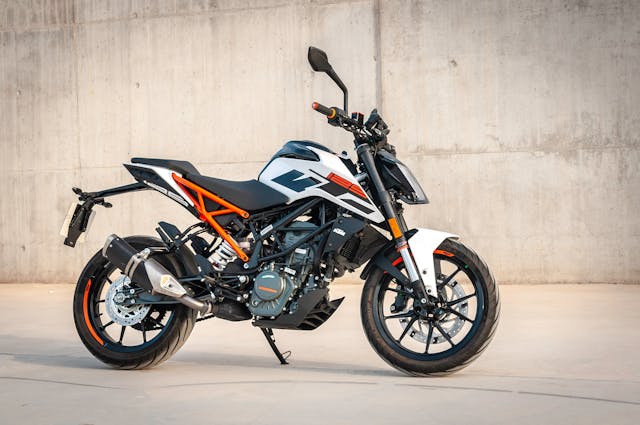
Demystifying Lane Splitting Laws: Navigating Motorcycle Safety in Colorado
In the realm of motorcycling, there exists a practice known as lane splitting. It may also be referred to as lane sharing or white-lining. This peculiar maneuver involves motorcyclists navigating through the crevices between lanes of stagnant or crawling traffic, essentially exploiting the spaces that lie dormant between road-hogging vehicles on multi-lane highways.
Such an act proves beneficial for riders seeking to outmaneuver congested roads and enhance their travel efficiency, especially in areas where traffic jams are less an exception and more a norm.
The state of Colorado currently finds itself embroiled in discussions around this very practice. “Can motorcycles split lanes in Colorado?” – A question resonating within its boundaries sparks numerous debates and conversations, leaving no clear consensus in sight.
States like California have taken decisive steps towards legalizing this somewhat controversial act of lane-splitting; However, it remains enveloped under the shadow of illegality within Colorado’s borders. Recent legislative endeavours though hint at a potential shift in this stance, suggesting that future might witness motorcyclists weaving through heavy traffic quite differently than they do today.
Current Traffic Laws in Colorado
In the mountainous expanse of Colorado, a recurring conundrum that perpetually puzzles the motorcycling fraternity pertains to the legal stance on lane splitting. The calendar pages have flipped over to 2024, yet there seems to be no marked transformation in laws concerning this topic. To dispel any lingering confusion: does Colorado law permit lane splitting in 2024? A succinct response to this curious inquiry is ‘NO’.
As per the prevailing legal framework, motorcyclists are positioned on an equal footing with motorists of other vehicles and are subjected to analogous provisions – albeit a few exceptions exist solely for those steering motorcycles. It becomes indispensable at this juncture to comprehend that stringent management of motorcycle maneuverability forms part of a more extensive schema aimed at fortifying road safety.
Notwithstanding continued discourses debating the virtues or otherwise of lane splitting, it remains an incontrovertible fact that any motorcyclist caught indulging in such activities within Colorado’s borders would likely confront judicial repercussions. Thus stands our current understanding.
The Concept of Lane Splitting for Motorcycles
Intermittently referred to as stripe-riding or white-lining, the technique of lane splitting involves motorcyclists weaving their way amidst lanes encompassing slow-moving traffic or vehicles at a standstill. This practice takes advantage of the spaces nestled between these lanes, enabling bikers to navigate around snarled roadways. Nevertheless, it is integral to illuminate the nebulous aspects concerning its lawful status within various states – Colorado being a prime example. The query “Is shoulder riding in Colorado permissible for motorcycles?” frequently emerges in debates over lane splitting.
In relation to Colorado’s legislation, current legal provisions demarcate explicit circumstances under which motorcycles can maneuver between lanes or otherwise. Contradicting widespread conjecture, present-day traffic laws do not unequivocally authorize motorcycles’ shoulder riding. Quite conversely, they incline towards prohibiting this act. The ambiguity shrouding this theme emanates from contrasting discernment of legislative parlance among law enforcement bodies and motorcycle riders alike; whilst some construe absence of clear-cut permission as tantamount to prohibition, others uphold a broader interpretation — subscribing to the belief that the action remains allowable under specific conditions.
To delve deeper into the issue, it is essential to comprehend the following points:
- The Colorado Revised Statutes (CRS) do not explicitly mention lane splitting or shoulder riding for motorcycles. This absence of clear guidelines often leads to confusion and misinterpretation.
- While some law enforcement bodies interpret this lack of explicit permission as a prohibition, others adopt a more liberal interpretation, viewing it as permissible under certain circumstances.
- According to CRS 42-4-1502(2), motorcyclists are required to ride within a single lane and should not overtake another vehicle in the same lane unless overtaking is safe and legal. This provision has been interpreted by many as an indirect ban on lane splitting.
- However, there are other provisions such as CRS 42-4-1503(1)(a), which states that two motorcycles can share a single lane side-by-side. Some riders argue that this implies tolerance towards some form of lane sharing if not outright approval for full-fledged lane splitting.
- Despite these interpretations, no solid legal precedent exists regarding motorcycle shoulder riding or stripe riding in Colorado. As such, riders who choose to engage in these practices do so at their own risk.
In conclusion, while current traffic laws in Colorado don’t clearly authorize motorcycle shoulder riding or stripe riding; they also don’t strictly forbid it. It’s crucial therefore for motorcyclists and law enforcement alike to familiarize themselves with existing legislation related to this practice. Until clearer regulations come into effect – caution remains paramount when engaging in any form of unconventional road maneuvers like these.
Arguments For and Against Motorcycle Lane Splitting

Those in favour of lane splitting see it as a plausible remedy for the relentless issue of traffic congestion, especially in areas with high populations. This approach is often lauded for its effective utilization of road space, given that motorcycles need significantly less room than cars and trucks. By creating an extra pathway for two-wheeled vehicles, lane splitting could potentially ease traffic flow. Moreover, supporters argue that this practice might minimize rear-end collisions – a notable danger to motorcyclists. The ability of bikes to nimbly manoeuvre between lanes acts as a practical defensive tactic from this viewpoint.
However, substantial counterarguments are not absent from this discourse. Critics maintain that any perceived safety advantages are negated by the inherent risks involved. They assert that the close quarters maintained between bikes and other vehicles escalates the chance of side-swipe incidents; particularly when considering the unpredictability of drivers switching lanes without warning signs or signals. Intriguingly enough, these debates lead us to ponder: what exactly is Colorado’s recent motorcycle law? It would appear that opposing arguments tipped the scales since Colorado presently forbids bikers from weaving through cars – declaring it illicit and punishable behaviour.This position clearly tips towards prioritizing motorists’ safety over any supposed benefits derived from lane splitting.
The Impact of Lane-Splitting on Traffic Flow
The dialogue surrounding motorcycle lane splitting, a maneuver that involves motorcycles nimbly threading their path through stationary or slow-moving lanes of traffic, has been filled with animated chatter. The state of Colorado hasn’t yet stamped its approval on this practice, sparking speculation among riders and motorists alike about the possibility of future legalization.
A kaleidoscope of impacts are believed to follow in the wake of introducing this act into everyday traffic dynamics; these effects are subject to change based on specific scenarios at play.
Regulations fine-tuned for effective management of lane splitting could potentially trigger improvements in overall traffic flow. By giving motorcycles the green light to weave fluidly between automobiles, congestion might meet its match as these nimble machines take advantage of space that would otherwise go unutilized. Moreover, when they adopt a lane-splitting strategy rather than occupying an entire lane, motorcycles end up saving valuable road real estate – indirectly enhancing flow conditions for fellow motorists.
However, it is quintessential to recognize that such boons can only fully materialize when appropriate rules govern motorcycle lane splitting operations and enforcement mechanisms ensure adherence – all designed towards maintaining safety standards on our roads.
Safety Concerns Associated with Motorcycle Lane Splitting
The act of lane splitting on a motorcycle is often contemplated as an encounter with elevated risk, rousing grave apprehensions for the riders and other participants of the road. The root cause of worry springs from the erratic essence inherent to this practice. When those astride motorcycles endeavor to traverse through constricted crevices amidst moving or static traffic, they may unexpectedly startle drivers who are ill-equipped for their sudden emergence.
Furthermore, the confined space typically diminishes a motorcyclist’s capacity to adapt or respond swiftly to abrupt fluctuations in traffic flow. Coupled with being in too close quarters with other vehicles during lane splitting intensifies collision probabilities exponentially. Even an insignificant veer by an automobile or unanticipated cessation can give rise to disastrous wreckage.
This perilous situation amplifies alongside speed differential augmentation – defining the pace at which a motorcyclist advances relative to surrounding vehicles. Moreover, inadequate visibility, especially under severe weather conditions or dense vehicular movement aggravates these safety hazards even more.
Undeniably lane-splitting delivers benefits such as truncated commuting durations and decreased chances of rear-end crashes; however these potential risks associated warrant serious consideration.
Legal Consequences of Lane Splitting in Colorado
Despite the allure of potential benefits stemming from motorcycle lane splitting, this practice persists as prohibited within Colorado’s borders. Riders caught indulging in such maneuvers are subjected to harsh legal ramifications, encompassing hefty monetary liabilities and detriments to their driving records. These penalties act as potent preventative measures, dissuading motorcyclists from venturing into lane splitting while ensuring compliance with ingrained traffic norms.
Beyond these punitive reactions, bikers entangled in mishap scenarios could likely encounter amplified legal repercussions if discovered partaking in lane splitting at the incident’s time frame. Under such circumstances, insurance firms may potentially deny any claims for damage or injury compensation. Moreover, if a court proceeding follows suit, the motorcyclist might find themselves held accountable – regardless of other concurrent factors – solely anchored on their participation in an act deemed illicit under Colorado’s vehicular regulations.
FAQ
Motorcycle lane splitting is essentially a maneuver where motorcyclists navigate between lanes of cars that are either moving sluggishly or have come to a halt, most commonly in traffic congestion. It’s often executed as a strategy to circumnavigate heavy traffic.
At present, the action of lane splitting finds no legal acceptance in Colorado’s road rules. It is officially deemed unlawful and could lead to punitive measures against the offending motorcyclist.
Arguments favoring motorcycle lane splitting primarily focus on its potential ability to lower traffic build-up since motorcycles would consume lesser roadway space. An additional point suggests that under specific circumstances, this practice might actually enhance safety for bikers.
The opposition towards motorcycle lane-splitting maintains that it could escalate accident risks due to motorcycles’ close proximity with other vehicles and their sudden movements. Detractors also posit that it might incite aggressive driving tendencies.
Ideally speaking, by decreasing the total count of vehicles occupying complete lanes, bike riders employing this method can aid in bettering overall vehicular movement. However, unexpected maneuvers and ensuing safety perils may conversely destabilize smooth traffic flow.
The primary apprehensions around bike riders using such tactics include heightened collision possibilities owing to nearness with other vehicles coupled with abrupt switching across lanes; not forgetting how these actions might irritate fellow drivers thus inducing impulsive driving behaviors.
Bearing legal repercussions for lane splitting in Colorado could mean facing traffic violation charges, monetary penalties and other punitive actions. Further, a biker found guilty of such indulgence might be held partially or wholly accountable in any legal proceedings subsequent to a road mishap.

